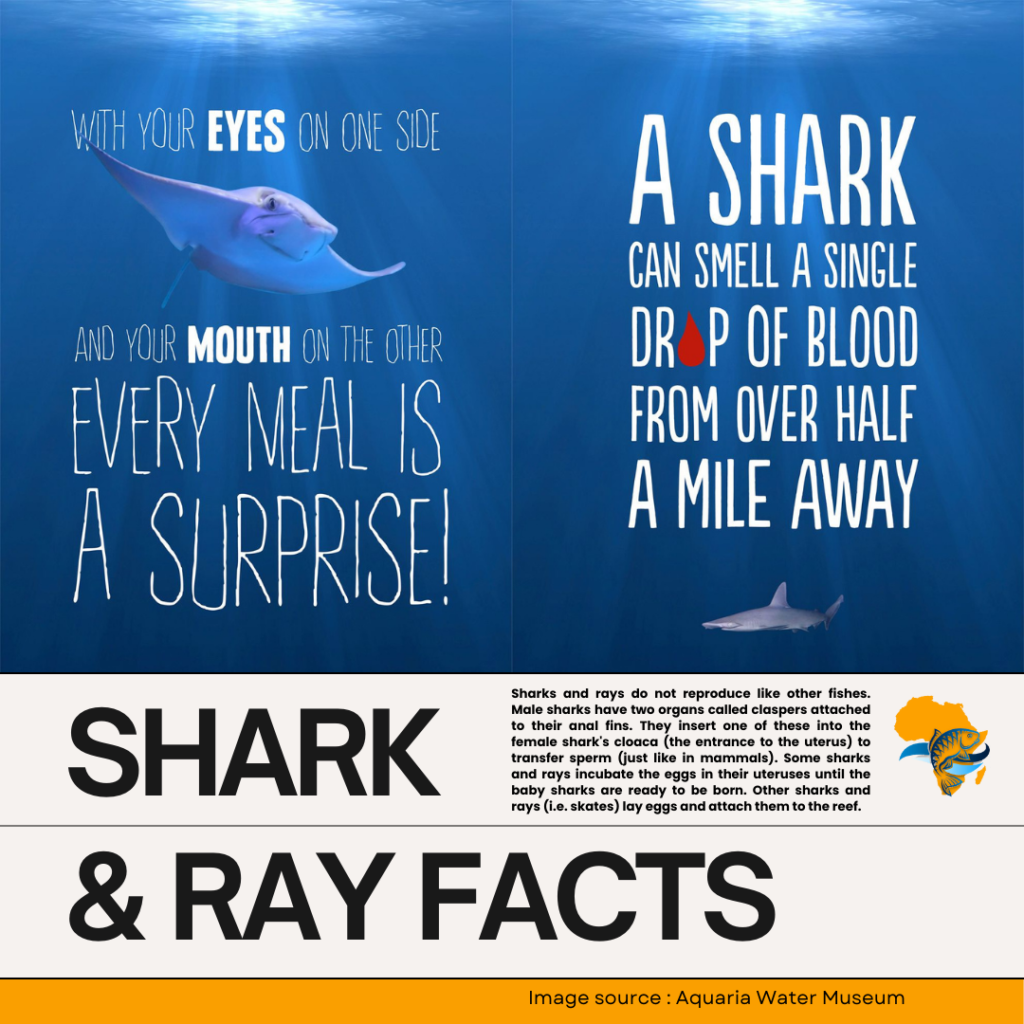
Sharks and rays do not have true bones like other fishes. They have cartilage instead which is lighter and much more elastic and allows them to bend in very tight circles.
Sharks do not have swim bladders. A swim bladder is a gas filled sack inside the body of bony fishes that allows them to stay still without sinking. Sharks compensate by having a very big liver that is filled with oil. Even so, sharks sink unless they keep swimming forward. The exception is the Sandtiger Shark which swallows air to make itself more buoyant.
A shark’s upper jaw is not attached to its skull like most animals. When a shark bites a large object, it is able to move its upper and lower jaw forward in order to take a bigger bite.
Unlike other fishes, sharks are able to replace their teeth constantly. New teeth grow from the inner surface of the jaw and rotate forward when the old teeth get worn out or lost during feeding.
Sharks and rays do not reproduce like other fishes. Most fish release clouds of sperm and eggs into the water column where they mix together. The fertilized eggs then float around until the fish larvae hatch and form schools of tiny fish. Male sharks have two organs called claspers attached to their anal fins. They insert one of these into the female shark’s cloaca (the entrance to the uterus) to transfer sperm (just like in mammals). Some sharks and rays incubate the eggs in their uteruses until the baby sharks are ready to be born. Other sharks and rays (i.e. skates) lay eggs and attach them to the reef.
Sharks have between 5 and 7 gill slits on each side of their body in front of their pectoral fins. Bony fishes only have one pair. Having many exposed gill slits probably helps transfer more oxygen into their blood faster which allows them to swim very fast when they need to.
Most shark’s skin is covered in small denticles instead of scales. Denticles are a lot like teeth. They have dentine in the centre and enamel on the surface. This makes shark’s skin very tough and abrasive like sandpaper. The shape and position of some shark’s denticles also helps reduce friction so that they can slip through the water easier.
Sharks have an extra sense that is able to detect tiny electric fields. They can use this to find food that is buried or to search for animals to eat in the dark or in turbid water.
Sharks and rays make up the sub-class of fishes called elasmobranches. This sub-class is part of a class of cartilaginous fishes called Chondrichthyes which also includes chimaeras (ratfishes).
